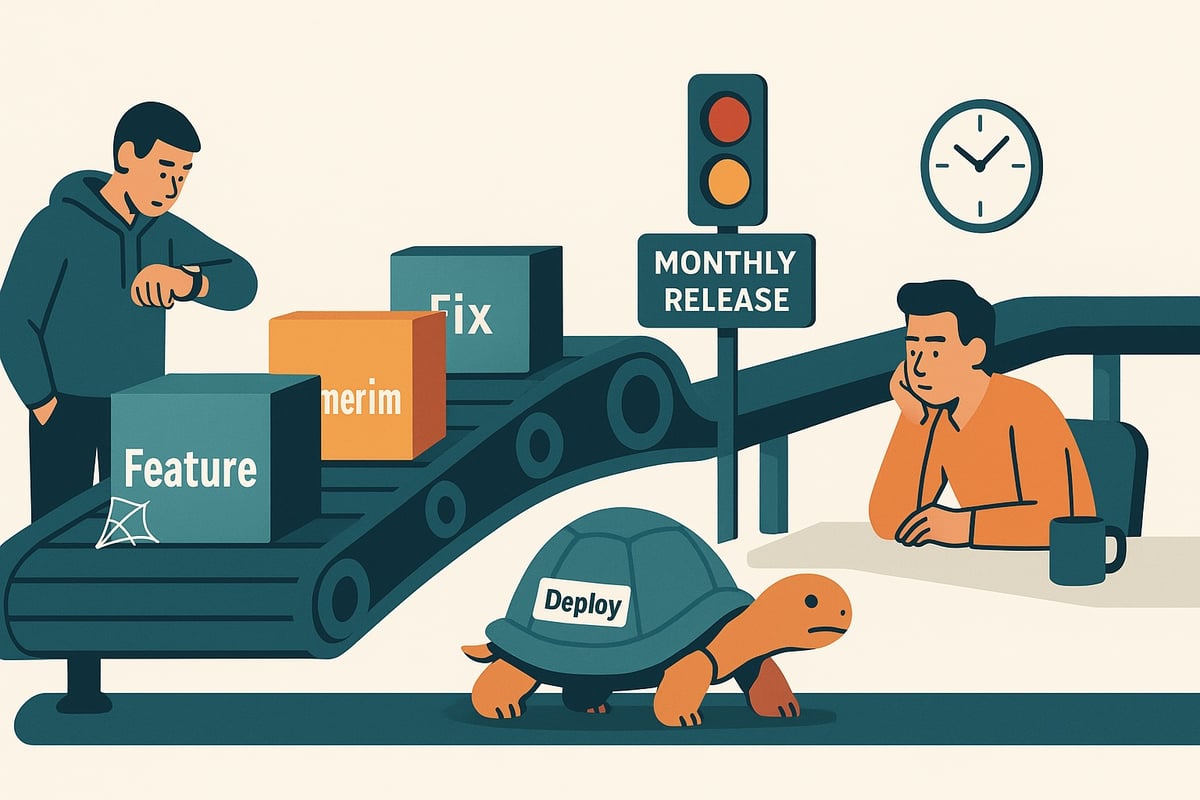Every minute your engineering team spends wrestling with convoluted code, patching brittle systems, or explaining workarounds to new hires is a minute they’re not building that innovative feature your customers want. This hidden productivity tax has a name: technical debt. And while it doesn’t appear on your balance sheet, its cost to your business is very real.
What Is Technical Debt, Really?
Technical debt is a concept first coined by software developer Ward Cunningham in 1992 to explain to non-technical stakeholders why resources needed to be allocated for refactoring code. He described it with a financial metaphor that remains powerful today:
“With borrowed money, you can do something sooner than you might otherwise, but then until you pay back that money you’ll be paying interest.”
— Ward Cunningham
At its core, technical debt describes what happens when development teams prioritize speed and short-term solutions over better, more sustainable implementations that would take longer to complete. This “debt” accumulates over time and, like financial debt, accrues “interest” in the form of additional work that must be done later.
But not all technical debt is created equal:
-
Deliberate technical debt is taken on consciously as a strategic decision to meet market deadlines. Teams make a calculated choice to implement quick solutions now with plans to refactor later.
-
Accidental technical debt accumulates through knowledge gaps, poor practices, or lack of documentation. This type typically carries higher long-term costs.
The True Cost to Your Business
When technical debt grows unchecked, it creates a cascade of negative impacts that affect not just your engineering team, but your entire business. The numbers tell a sobering story:
-
Developers waste approximately 33% of their time dealing with technical debt rather than building new features, according to a Stripe Developer Coefficient Study
-
Organizations with high technical debt deliver new features 25-50% slower than competitors with well-maintained codebases
-
For a team of 10 developers with an average salary of $120,000, a 30% productivity loss equals approximately $360,000 in wasted salary expenses annually
-
High-debt codebases typically experience 2-3 times more production bugs than well-maintained systems
The consequences extend far beyond just engineering inefficiency:
Diminished Market Position
Companies falling behind in release velocity typically lose 1-2% market share annually to more agile competitors. A six-month delay in releasing a key feature can reduce its lifetime value by a significant amount in competitive markets.
As SonarSource points out, “even though Agiles’ main purpose is to increase forward motion by speed, the lack of tackling bug fixes eventually reduces forward motion as the issues accumulate.”
Quality and Customer Experience Suffers
When products are built on debt-laden systems, quality inevitably suffers. Customers encountering repeated software problems are 3 times more likely to churn, directly impacting your retention metrics and revenue.
Team Morale and Retention Plummets
Perhaps most concerning for today’s competitive talent market: teams working with significant technical debt experience higher turnover rates due to the frustration of constantly dealing with problematic code. Engineers want to build, not patch.
Measuring What Matters: How Bad Is Your Debt?
Before you can address technical debt, you need to quantify it. Several approaches can help measure the scale of your challenge:
Technical Debt Ratio (TDR)
This expresses the percentage of time required to eliminate identified issues relative to the time spent creating the system. When your TDR exceeds 30%, you’re in the danger zone with critical business risk.
Interest Rate Calculation
You can calculate your specific technical debt “interest rate” using a straightforward formula:
Interest Rate = (Maintenance Hours / Total Development Hours) × (% Attributed to Technical Debt) × 100
For example, if maintenance consumes 40% of development time and 50% of maintenance relates to technical debt, your interest rate equals 20% — meaning one-fifth of your engineering capacity is servicing debt rather than creating value.
Break-Even Analysis
When considering remediation efforts, calculate when refactoring becomes financially advantageous:
Break-Even Period (months) = Refactoring Cost / Monthly Interest Cost
For example, if refactoring costs $50,000 and monthly productivity loss is $5,000, the break-even period is 10 months — after which you’re realizing net positive returns on your investment.
Strategic Approaches to Managing Technical Debt
Managing technical debt requires a multi-faceted approach combining prevention, strategic reduction, and organizational commitment.
Prevention Techniques That Work
-
Implement systematic code reviews to identify potential issues early. Using tools like GitHub or Bitbucket can streamline this process.
-
Develop automated tests, especially in early stages of the software development lifecycle, to prevent regression issues.
-
Maintain proper documentation to help developers make informed decisions and have a reference for future development.
-
Practice continuous refactoring to improve code structure without changing behavior, maintaining clean architecture over time.
-
Establish and enforce coding standards within development teams to create consistency and reduce debt from the start.
Strategic Reduction for Existing Debt
For existing technical debt, prioritize addressing it based on business value, risk, and complexity. Industry best practices suggest allocating 10-20% of development capacity specifically to technical debt reduction.
As Atlassian recommends: “Prioritize technical debt in sprint planning just like normal feature work. Don’t hide it in a separate backlog or issue tracker.”
Some organizations implement “technical tax” systems where each new feature development automatically allocates a percentage of effort toward debt reduction in the affected components.
Building a Culture of Technical Debt Awareness
The most effective approaches to managing technical debt involve organizational cultural change. Here’s how to build that culture:
Integrate Technical Debt Metrics into Reporting
Incorporate technical debt metrics into regular reporting cycles, with executive dashboards showing current metrics, trends, and financial impact estimates. This visibility elevates technical debt from an engineering concern to an organizational priority.
Create Cross-Functional Awareness
Develop shared understanding between technical and financial stakeholders through educational programs that help engineers understand financial implications of technical decisions and help finance teams understand how technical debt affects business metrics.
To effectively communicate the importance of addressing technical debt, illustrate the long-term costs using real-world examples or case studies that demonstrate concrete impacts on the company’s bottom line. This evidence-based approach helps bridge the gap between technical concepts and business outcomes.
Reframe as Strategic Investment
Approach technical debt reduction as a strategic investment rather than a cost center, emphasizing returns in productivity, quality, and market responsiveness. CFOs should evaluate technical debt remediation using the same financial models applied to other capital investments.
The Path Forward
Technical debt represents a significant yet often invisible drain on organizational resources, productivity, and competitiveness. Organizations that implement systematic technical debt quantification and management typically realize:
- 20-40% improvements in development velocity
- 30-60% reductions in production incidents
- 15-25% decreases in operational costs
- Significant improvements in employee retention
As technical debt continues to be a pervasive challenge in software development, organizations that effectively manage it will gain significant competitive advantages through improved efficiency, higher quality products, and more satisfied development teams.
The choice is clear: you can pay down your technical debt through strategic investment now, or you can continue paying compounding interest indefinitely, watching your product velocity and market position steadily erode.
What’s your next move?








